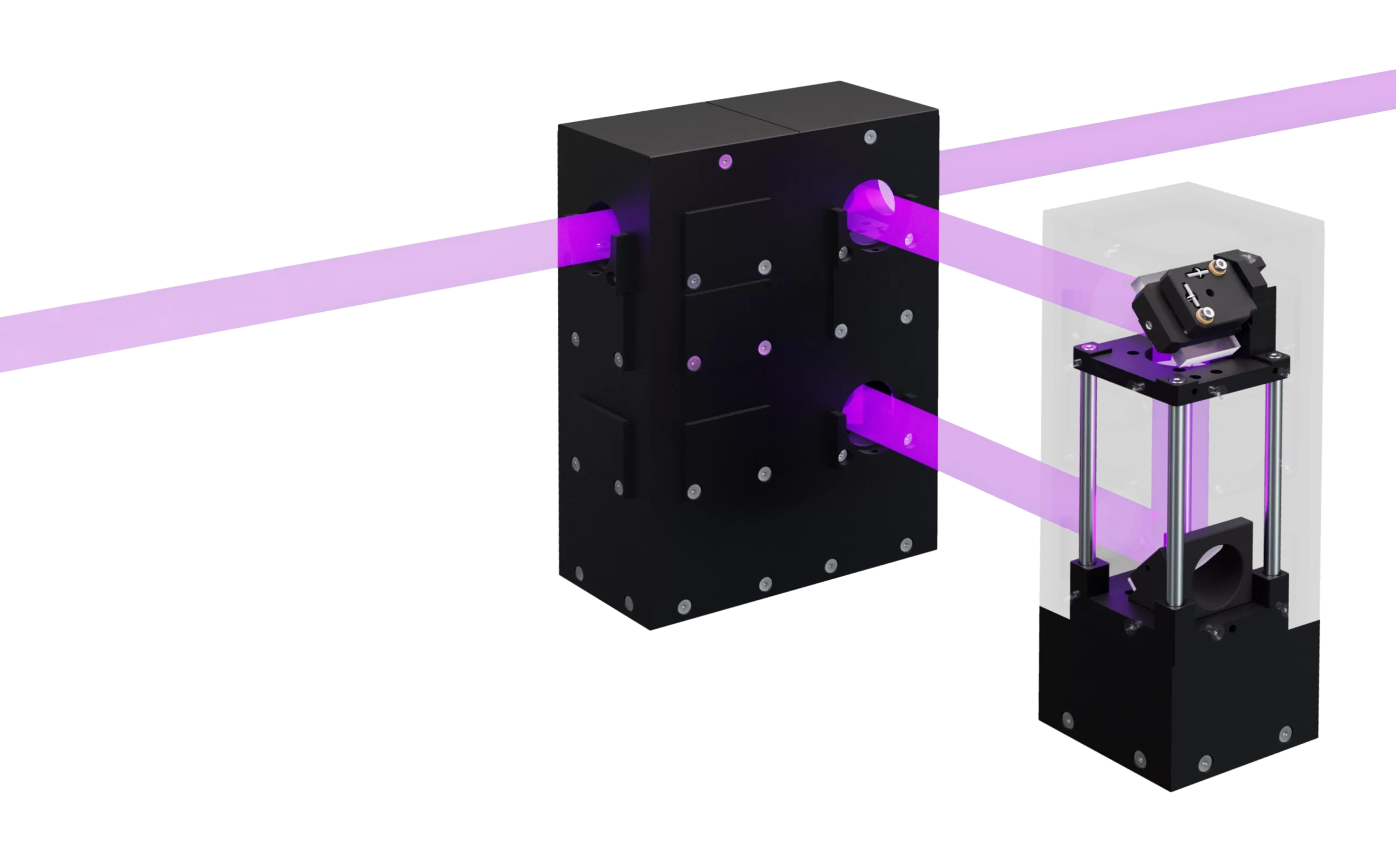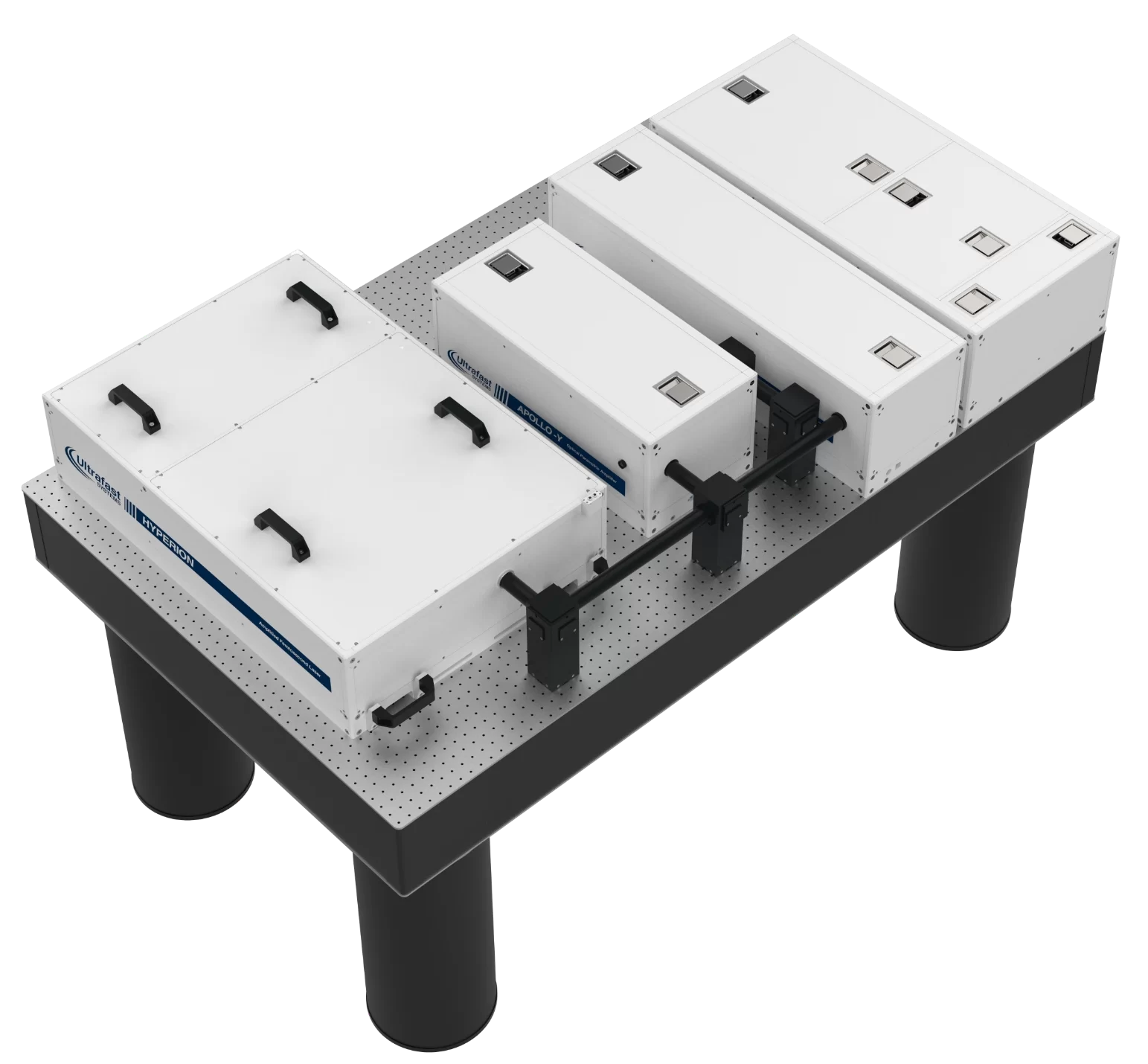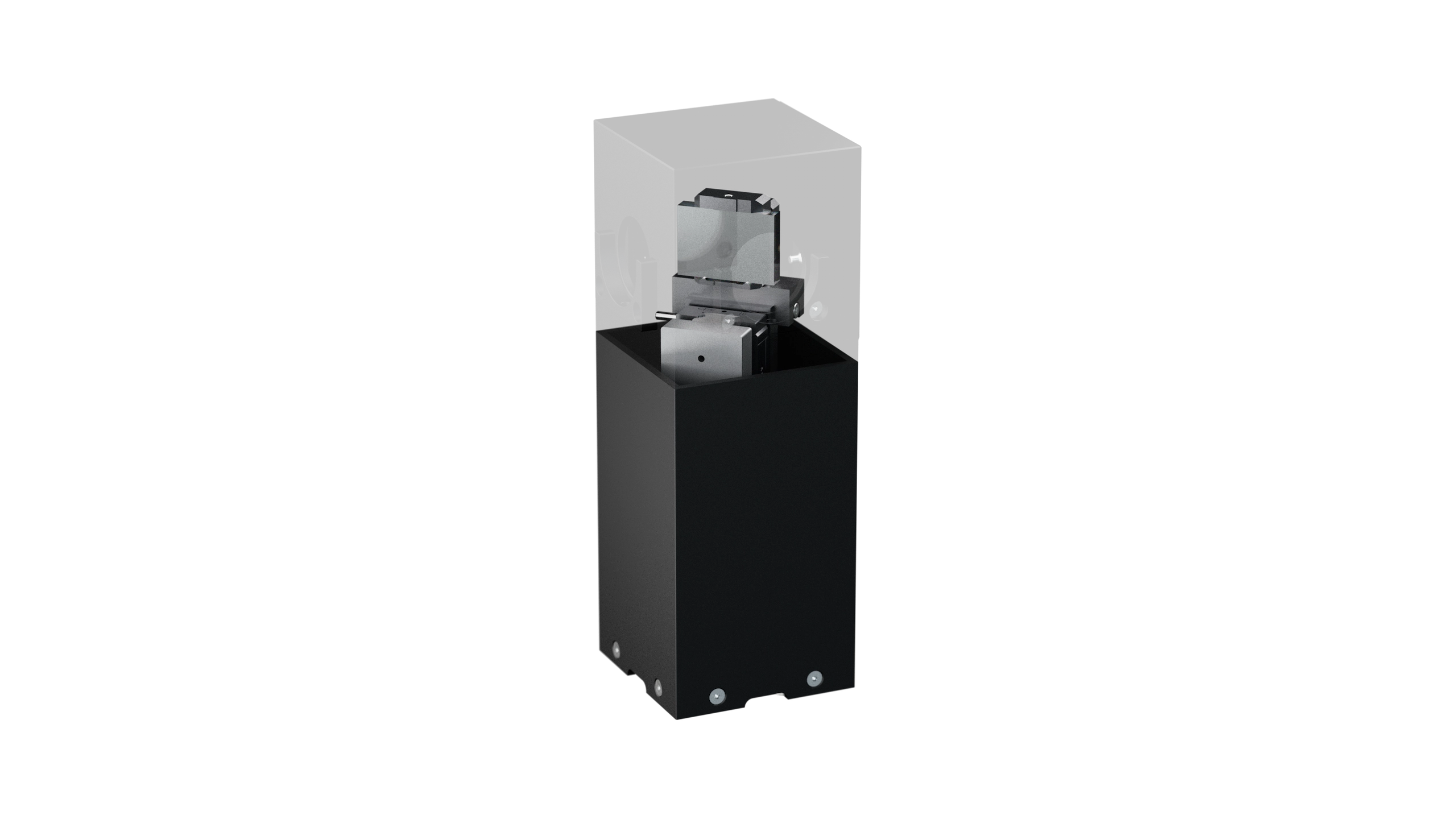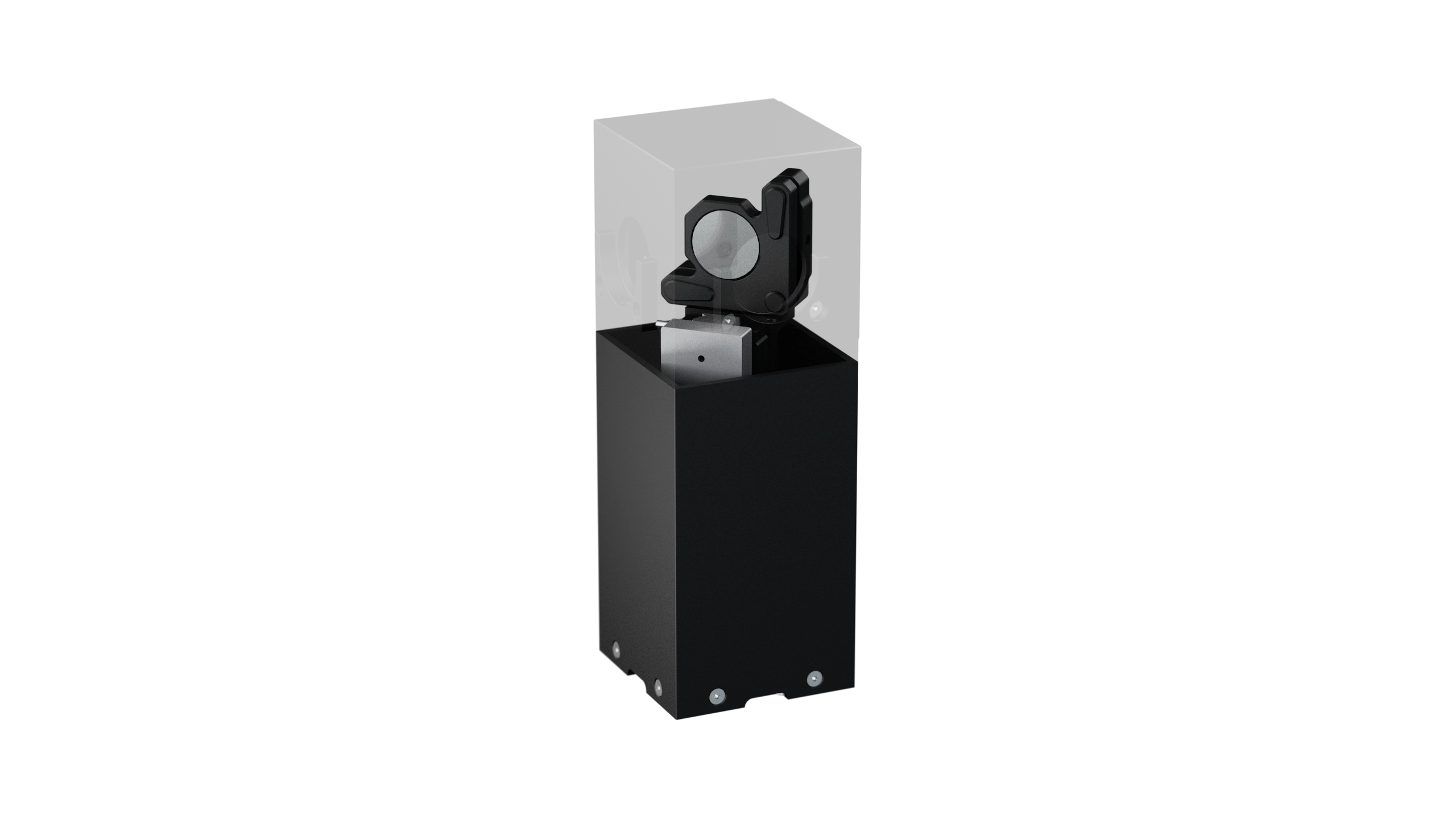
The Ultrafast Systems transport optics (TO) kits are designed for time-resolved spectrometry experiments. They significantly increase laser safety and protect the beams from air currents.
These TO kits also protect the optics from dust, making the overall setup more robust and resistant to mechanical shock and accidental mirror mishandling.



The optics inside are decoupled from the enclosures, so an accidental bump on the beam tube or the enclosure itself would not affect the alignment.
The optics inside are decoupled from the enclosures, so an accidental bump on the beam tube or the enclosure itself would not affect the alignment.
Our TO family includes mirrors, beamsplitters, manual switching mirrors, motorized switching mirrors, and periscopes. The clear aperture of the routing optics is 24 mm.
Our TO family includes mirrors, beamsplitters, manual switching mirrors, motorized switching mirrors, and periscopes. The clear aperture of the routing optics is 24 mm.


Halcyone features versatile and user-friendly LabVIEW-based software for instrument control and data acquisition. The software allows for full experiment automation, so no input from the user is required for the whole experiment duration.
Supports a PMT detector with a computer-controlled monochromator.
Supports a CCD detector with a high throughput spectrograph.
Takes into account the pump and fluorescence wavelengths and automatically adjusts the computer controlled non-linear crystal’s angle.
Automated alignment of the optical delay line.
Computer controlled switching between UV, VIS, and NIR fluorescence spectral ranges.
Supports computer controlled translating sample holder.
Supports pump beam shutter.
Supports motorized filter wheel for automated pump intensity control.
Saves every individual kinetic scan, so if the experiment is aborted (due to laser fluctuations, power outages, etc.) all previous scans are not lost.
Threshold adjusted automatic probe intensity spike rejection – an advanced setting that collects data points again if the probe is not stable.
API (Application Programming Interface) for HALCYONE is provided for further experiment customization and integration with external applications.
Time-resolved fluorescence spectrometers are designed to measure the lifetime of the emissive excited state of a molecule. As a result of the photon absorption, the molecule passes from the ground state to an excited state. The reverse transition will occur at a rate specific to this chromophore. The lifetime of fluorescence is unique for each molecule and depends on the molecule’s environment. This property makes time-resolved spectrometry a powerful tool for studying processes that may involve:
Radiative relaxation (fluorescence)
Vibrational relaxation
Internal conversion
Energy transfer
Intersystem crossing (i.e. singlet to triplet transition)
Solvation
Conformational changes
Electron transfer to another molecule or the solvent
In a broader sense, HALCYONE can be used in:
Photophysics
Cell biology
Photochemistry
Materials science
Photobiology
Nanoscience
This site is protected by reCAPTCHA and the Google Privacy Policy and Terms of Service apply.
© 2002 – 2024 Ultrafast Systems, 8330 Consumer Ct, Sarasota, FL 34240, USA. All Rights Reserved.
An answer to your question might already be there.